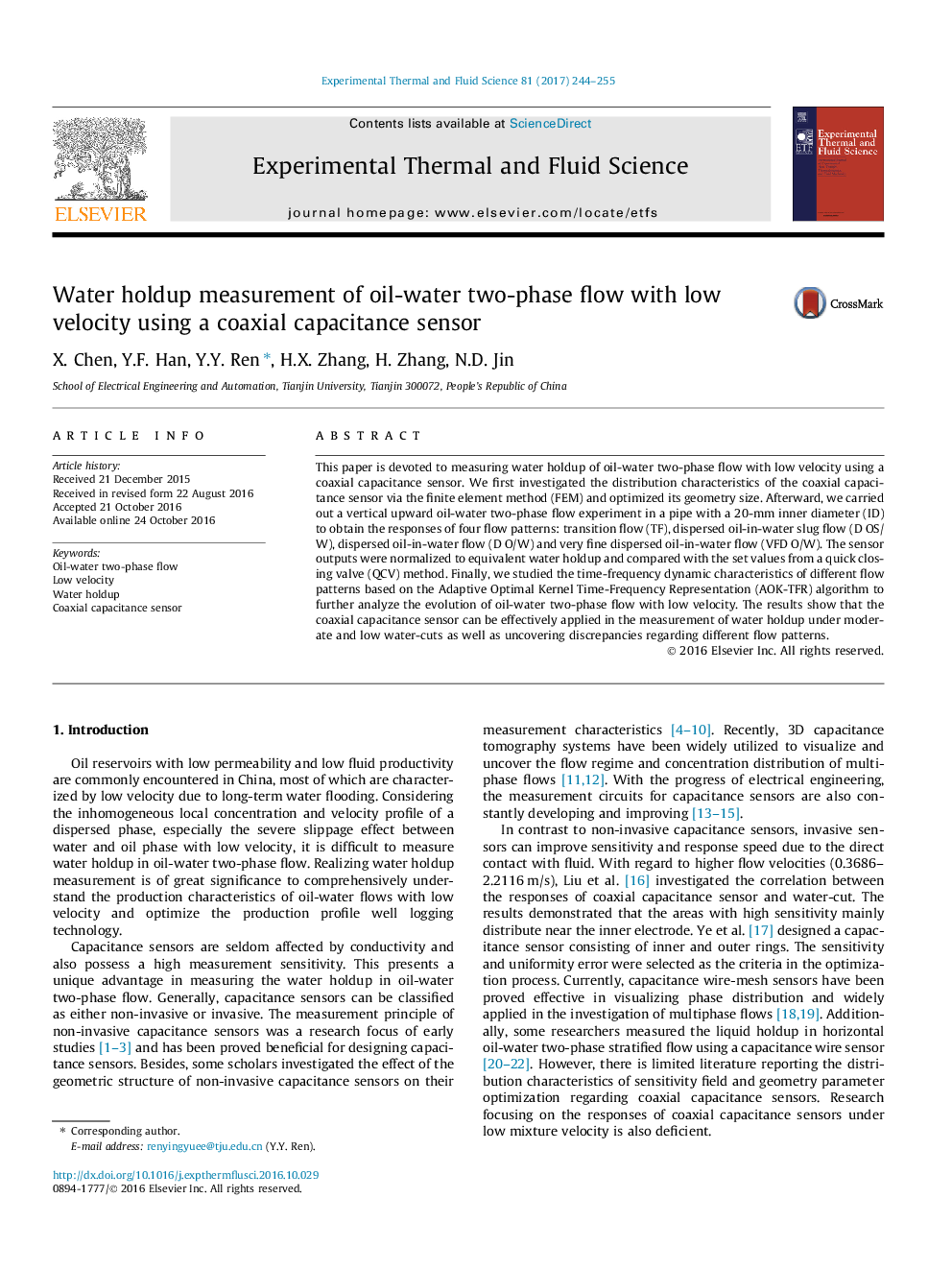| Article ID | Journal | Published Year | Pages | File Type |
|---|---|---|---|---|
| 4992531 | Experimental Thermal and Fluid Science | 2017 | 12 Pages |
Abstract
This paper is devoted to measuring water holdup of oil-water two-phase flow with low velocity using a coaxial capacitance sensor. We first investigated the distribution characteristics of the coaxial capacitance sensor via the finite element method (FEM) and optimized its geometry size. Afterward, we carried out a vertical upward oil-water two-phase flow experiment in a pipe with a 20-mm inner diameter (ID) to obtain the responses of four flow patterns: transition flow (TF), dispersed oil-in-water slug flow (D OS/W), dispersed oil-in-water flow (D O/W) and very fine dispersed oil-in-water flow (VFD O/W). The sensor outputs were normalized to equivalent water holdup and compared with the set values from a quick closing valve (QCV) method. Finally, we studied the time-frequency dynamic characteristics of different flow patterns based on the Adaptive Optimal Kernel Time-Frequency Representation (AOK-TFR) algorithm to further analyze the evolution of oil-water two-phase flow with low velocity. The results show that the coaxial capacitance sensor can be effectively applied in the measurement of water holdup under moderate and low water-cuts as well as uncovering discrepancies regarding different flow patterns.
Related Topics
Physical Sciences and Engineering
Chemical Engineering
Fluid Flow and Transfer Processes
Authors
X. Chen, Y.F. Han, Y.Y. Ren, H.X. Zhang, H. Zhang, N.D. Jin,
